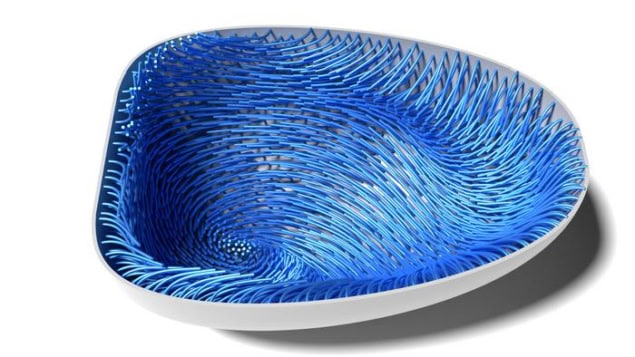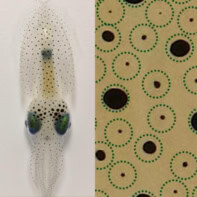
Scientists in the US have simulated the transport of nutrients through maturing egg cells such as those found in newly formed embryos. Using a simple system comprising microtubules, motors and a fluid, they showed that tornado-like vortex flows allow critical components needed for egg cell development to mix and be transported rapidly around the cell. The work advances our understanding of how egg cells nourish themselves – a key process in organism growth and development.
Maturing egg cells, or oocytes, can be much bigger than other types of cells. This is because they must contain everything required to grow into entire organisms. Their large size has a major downside, though: it makes it harder for important nutrients to reach all parts of the cell. For example, while it takes just 10 to 15 seconds for protein molecules to travel from one side of a typical human cell to the other via diffusion, in oocytes, the same process would take an entire day – far too long for the cell to be able to function properly.
To compensate for their large size, oocytes have evolved special mechanisms to generate so-called “cytoplasmic streaming flows” that help nutrients and other molecules circulate more rapidly. However, the origin of these flows was not well understood.
A self-organizing system that creates global flows
In the new work, researchers led by computational biologist Michael Shelley found that they could create a self-organizing system in which materials flow around the model cell in ways that are strongly reminiscent of those observed in real fruit fly oocytes. “It is known that these flows are necessary for the proper development of the organism,” explains Shelley, who directs the Center for Computational Biology at the Flatiron Institute in New York. “They are also thought to allow for a timely delivery of components that need to be properly placed in the oocyte, and perhaps for mixing of these components.”
The fruit fly is one modern biology’s model organisms, Shelley adds, so it is very intensely studied. However, flows like this also arise in the oocytes of other organisms, such as mice, that are closer to humans in evolutionary terms. “Our simple (though computationally difficult) model provides an explanation of the variety of flows observed not only in our study but also those in previous experiments,” he says.
Modelling the cellular contents that create the micro-tornadoes
The team, which includes researchers from Princeton University and Northwestern University, used an advanced open-source biophysics software package called SkellySim, which was developed at Flatiron, to create their model. SkellySim models the cellular structures and processes that create the micro-vortices. These include the cell’s microtubules, which are flexible filaments that line the inside of cells; molecular “motors”, which are specialized proteins that carry “payloads” involved in generating the flows; and the cytoplasm that surrounds them.
By simulating the motion of thousands of microtubules as they respond to the forces exerted by the molecular motors, the researchers determined that the flows originate from interactions between the microtubules and the fluid naturally present in the cell. As the microtubules buckle under the forces, they create movement in the fluid surrounding them. This movement can push other microtubules to bend in the same direction. When enough microtubules do this, the fluid starts to propagate in a vortex-like flow across the whole oocyte. This micro-tornado is what allows nutrients and other molecules to cross the cell in just 20 minutes instead of the 20 hours possible with diffusion alone
Few ingredients required
“Our model shows that the system has an incredible capacity for organizing itself to create this functional flow,” Shelley says. “And you just need a few ingredients – microtubules, the geometry of the cell and molecular motors.”
The results were possible, he adds, thanks to advances in high-performance computing methods on several fronts. These include fluid-structure interactions involving the Stokes equations for fluid motion in complex domains as well as models that capture the hydrodynamics of immersed long, thin polymers (the microtubules) moving through such a fluid.

Giant quantum tornado behaves like a black hole in miniature
Shelley says the problem was a “beautiful” one to solve: “It sits at the boundaries of soft and active materials, experimental and development biology,” he tells Physics World. “Its understanding brings in tools from mathematical modelling, fluid physics, soft elastic materials and stability analysis.”
The researchers say their work, which is detailed in Nature Physics, advances our understanding of developmentally important flows and other activity-driven self-organization problems in biology. They will soon publish another study on why vortices appear to be globally attracting states and are preparing a new publication on how egg cell geometry causes them to become asymmetric. “Finally, we are looking into other fluid transport problems in developing oocytes involving ‘ring canals’,” Shelley reveals.



